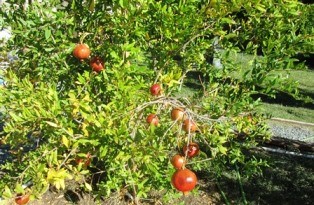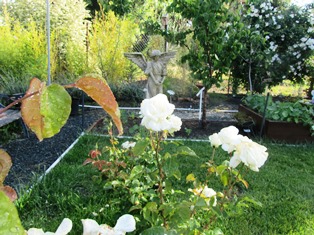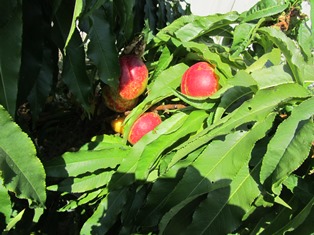To-Do List of Chores for the Fall Garden
From my office widow, I look out over what once was a lush and thriving garden. Not so today.
I can hardly bear to gaze upon the sorrowful, dried tomato vines that for me have come to symbolize the severity of the extreme drought on California gardens.
Now that fall will soon arrive, I’ll toss onto the compost pile those vines along with others from pumpkins and hard-shelled squash.
So with the garden cleared, I’m thinking ahead to next year, ever hopeful we’ll get rain rather than a repeat of dry conditions like this past year.
To ensure the viability of our fruit trees, citrus trees, and various berries through the fall and winter, there is a spray regimen to be initiated. I’ll add it to my long list of chores that will need to be done.
MY FALL CHECKLIST FOR THE GARDEN
Turn the soil, add amendments like compost to hold in the water.
Prepare new beds.
Build cold frames and 4- x 6- foot boxes for new raised beds.
Cut the canes of blackberries (berries only set up on two-year-old canes that won’t again produce; cut to ensure new fruiting canes will take their place).
Prune away the spent floricanes of red raspberries, once they’ve produced fruit.
Clean up around the bases of all trees and evergreen plants; add mulch.
Also remove all leaves at the base of all fruit trees and dispose.
Remove rose leaves after blooming season, cut canes to 18 inches, and spray for diseases and pests.
Stake young trees so they’ll survive windy winters, growing straight and tall.
Treat the trees with an organic spray (one containing copper and protector oil) to prevent fungal disease and pests.
Get out the frost cloth in readiness to cover tender citrus trees.
Prune back the hydrangeas.
Plant fall bulbs for spring flowering.
Fall Spraying for Peach Leaf Curl
Just beyond the sliding glass door of my kitchen, we’ve carved a bit of a lawn and garden out of a wild weedy field. When I’m washing dishes or making jam, I can see my garden sanctuary where I’ve moved in a statue of an angel and positioned a bench near two nectarine trees–a perfect place to sit and take in the view of Mount Diablo’s peaks.
Of late, though the nectarine trees look less than healthy. The two heavy-bearers have become infected with the fungus that causes peach leaf curl. It’s not just my trees that are infected; two of my neighbors have the same problem. And this showed up late in my trees this year.
I’ve tried plucking off the twisted and contorted leaves as they show, discarding them in the garbage (not the compost pile). However, I fear I am losing this battle. The trees are going through a leaf drop now that it’s middle of November. I don’t want that fungus overwintering in the infected leaves, so I’m gathering those into the garbage, too. And I’ll begin a spraying program.
The nectarines and peaches need to be sprayed three or four times (if we have a strong rainy season), from autumn to bud break in the spring. Both lime sulfur and copper sprays can be used; both are considered organic, although some formulations are not very strong. But the leaves must not remain on the ground under the trees.
Last year, I sprayed those trees the required number of times with an organic horticultural oil recommended by the local garden center. The trees were fine most of the summer. But last month, the infection showed up. And here I am now, plucking the leaves from the trees and picking them up from the ground.
I dare not use anything on treating the fungus that is not organic and safe for the honeybees. Come spring, perhaps I’ll be rewarded for my vigilance with new growth that is healthy and free of the fungus.
 Facebook
Facebook Goodreads
Goodreads LinkedIn
LinkedIn Meera Lester
Meera Lester Twitter
Twitter







